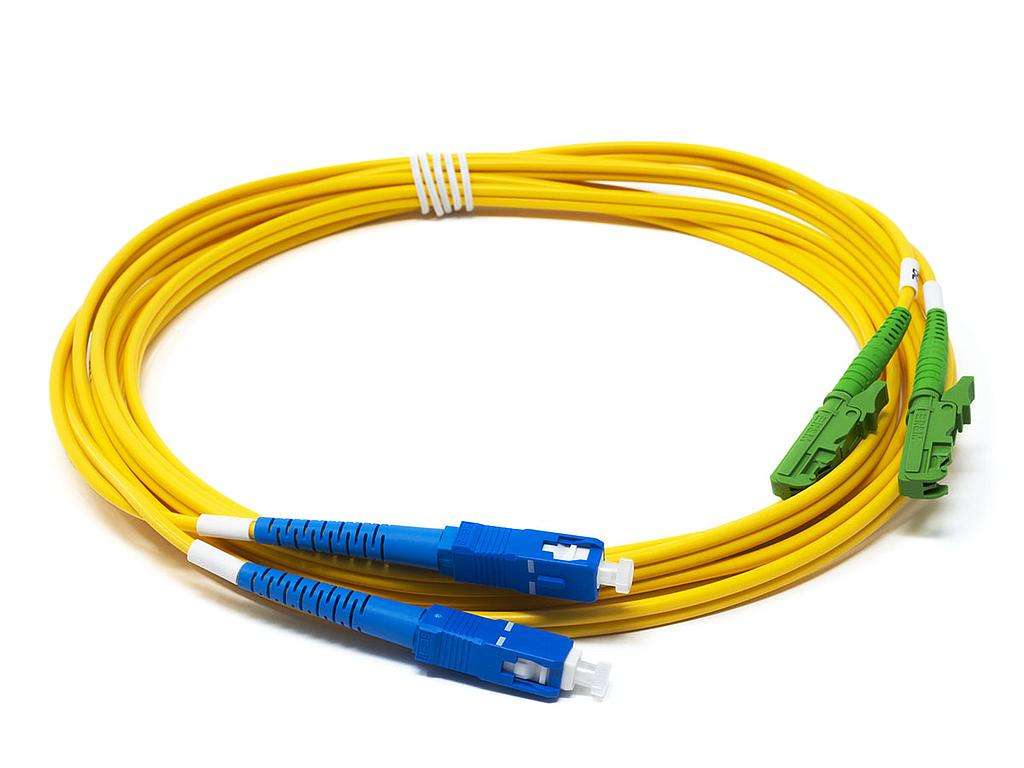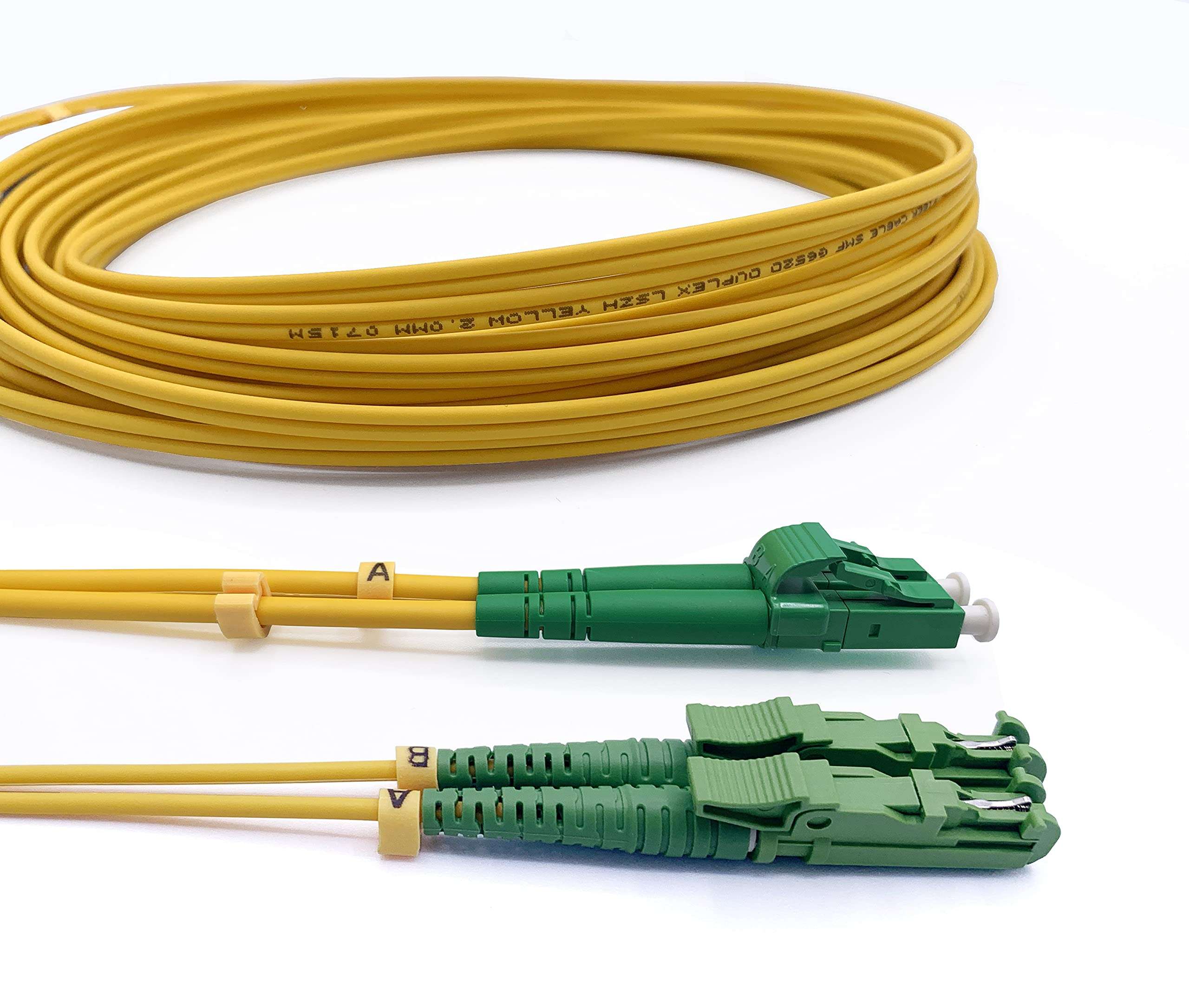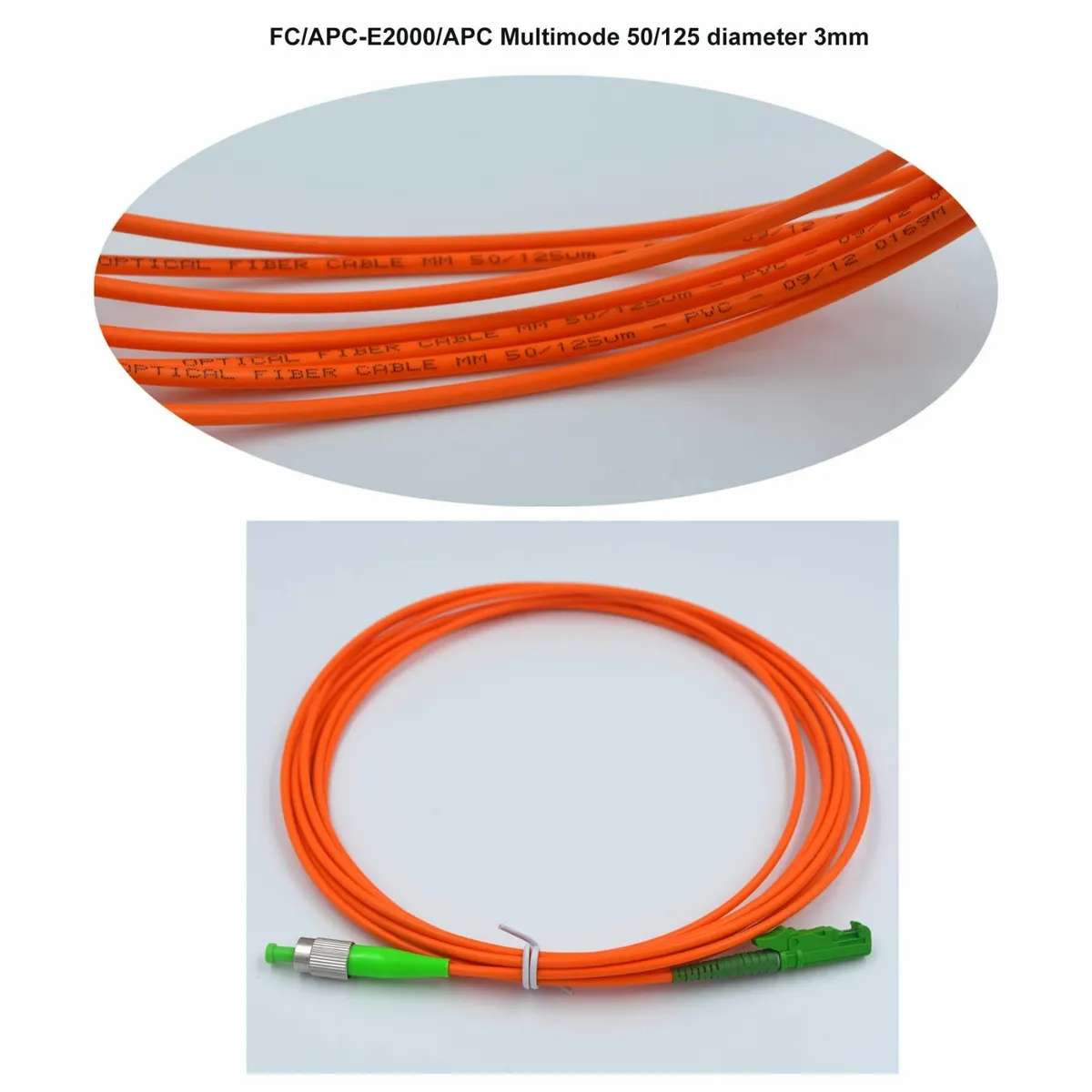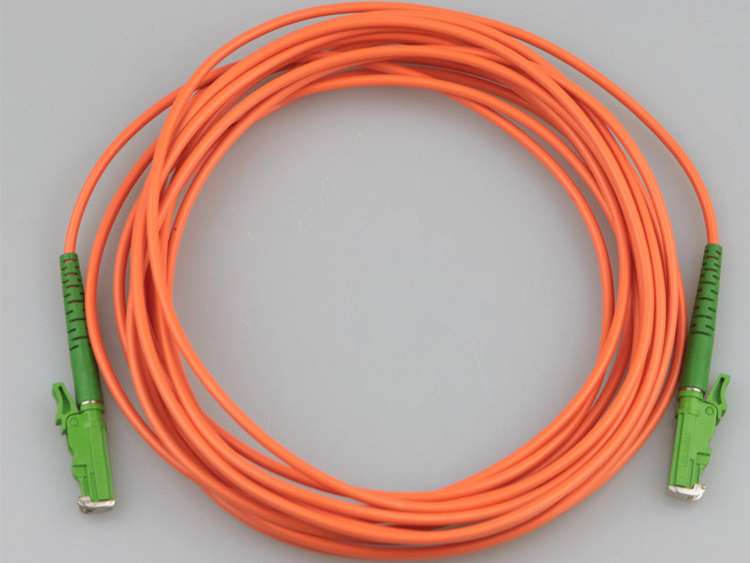Choosing the Right E2000 Patch Cord: Simplex, Duplex, Single Mode, Multimode

Understanding E2000 Patch Cords and Their Importance
E2000 patch cords are crucial components for ensuring seamless connectivity in networking. These fiber optic cables play a vital role in transmitting data signals between devices, enabling efficient communication and data transfer. This blog aims to provide a comprehensive understanding of E2000 patch cords, including their different types: simplex and duplex, as well as single mode and multimode. By exploring the various aspects of E2000 patch cords, you will gain valuable insights into their importance and how they contribute to the overall performance of your network. Armed with this knowledge, you will be better equipped to choose the right E2000 patch cord that meets your specific networking needs.
Exploring the Basics of E2000 Patch Cords
What are E2000 Patch Cords?
E2000 patch cords are fiber optic cables that are widely used in networking applications to establish reliable and high-speed connections. These patch cords consist of a connector on each end, allowing them to be easily plugged into devices such as switches, routers, and servers. The primary purpose of E2000 patch cords is to transmit data signals between these devices with minimal loss and interference.
The components and construction of E2000 patch cords are designed to ensure optimal performance. They typically feature a ceramic ferrule, which holds the fiber securely in place and aligns it precisely for efficient data transmission. The ferrule is housed within a durable connector body that provides protection against physical damage and environmental factors.
Key Features of E2000 Patch Cords
E2000 patch cords offer several key features that make them highly desirable in networking environments. One notable feature is their high precision, which ensures accurate alignment of fibers for maximum signal integrity. This precision helps minimize signal loss and distortion, resulting in improved data transmission quality.
Reliability is another crucial aspect of E2000 patch cords. These cables are built to withstand rigorous usage and maintain consistent performance over time. Their robust construction ensures durability even in demanding conditions, making them suitable for various industries and applications.
Ease of use is another advantage offered by E2000 patch cords. They are designed for simple installation and removal, allowing for quick connectivity changes or troubleshooting procedures. Additionally, these patch cords are compatible with a wide range of devices, making them versatile options for different networking setups.
In summary, E2000 patch cords provide reliable connectivity with their high precision, reliability, ease of use, and compatibility with various devices. Understanding these basics will help you make informed decisions when choosing the right E2000 patch cord for your networking needs.

Understanding the Differences: Simplex and Duplex E2000 Patch Cords
Simplex E2000 Patch Cords
Simplex E2000 patch cords are fiber optic cables that consist of a single fiber within a connector. They are designed for applications where data transmission occurs in only one direction. The term "simplex" refers to the fact that these patch cords have a single channel for transmitting data.
These patch cords are commonly used in scenarios where there is no need for bidirectional communication, such as point-to-point connections or situations where data flows in one direction only. Simplex E2000 patch cords are often utilized in applications like video streaming, security systems, and certain industrial processes.
The benefits of using simplex E2000 patch cords include their simplicity and cost-effectiveness. Since they have a single fiber, they require less material and are generally more affordable compared to duplex patch cords. Additionally, simplex E2000 patch cords offer lower insertion loss due to the absence of additional connectors or interfaces.
Duplex E2000 Patch Cords
Duplex E2000 patch cords, on the other hand, consist of two fibers within a single connector. These fibers allow for bidirectional communication, enabling simultaneous data transmission and reception. The term "duplex" indicates that these patch cords provide two channels for transmitting and receiving data.
Duplex E2000 patch cords are widely used in applications where bidirectional communication is essential, such as computer networking, telecommunication systems, and server connections. They enable efficient data exchange between devices by allowing simultaneous sending and receiving of information.
The advantages of using duplex E2000 patch cords include their versatility and flexibility. With two fibers housed within a single connector, they provide a compact solution for bidirectional communication needs. Duplex E2000 patch cords also simplify cable management by reducing the number of cables required for connecting devices.
In summary, understanding the differences between simplex and duplex E2000 patch cords is crucial for selecting the appropriate option for your networking requirements. Simplex patch cords are suitable for unidirectional applications, while duplex patch cords enable bidirectional communication. Consider the specific needs of your network to determine which type of E2000 patch cord will best meet your connectivity demands.
Choosing the Right Fiber Type: Single Mode or Multimode E2000 Patch Cords
Single Mode E2000 Patch Cords
Single mode E2000 patch cords are fiber optic cables that are designed for long-distance communication. They utilize a single mode fiber, which has a smaller core diameter compared to multimode fibers. This allows for the transmission of a single light signal, resulting in higher bandwidth and longer transmission distances.
These patch cords are commonly used in applications where data needs to be transmitted over long distances, such as telecommunications, long-haul networks, and campus backbones. Single mode E2000 patch cords offer excellent signal quality with low dispersion and attenuation, ensuring reliable data transmission even over extended distances.
The benefits of using single mode E2000 patch cords include their ability to support high-speed data transfer rates and their compatibility with various networking devices. They provide greater bandwidth capacity, making them suitable for applications that require high data throughput.
Multimode E2000 Patch Cords
Multimode E2000 patch cords, on the other hand, utilize multimode fibers that have a larger core diameter. These fibers allow multiple light signals to be transmitted simultaneously through different paths or modes. As a result, multimode patch cords are typically used for shorter distance communication within local area networks (LANs) and data centers.
Multimode E2000 patch cords are ideal for applications where the distance between devices is relatively short. They offer cost-effective solutions for network connections within buildings or campuses. These patch cords provide flexibility and ease of installation due to their larger core size.
The advantages of using multimode E2000 patch cords include their ability to support high data rates over short distances and their cost-effectiveness compared to single mode fibers. They are commonly used in LANs, video surveillance systems, and multimedia applications.
When choosing between single mode and multimode E2000 patch cords, consider the distance and bandwidth requirements of your network. If you need to transmit data over long distances, single mode patch cords are the preferred choice. For shorter distances within LANs or data centers, multimode patch cords offer a cost-effective solution.

Enhancing Connectivity: Benefits and Applications of E2000 Patch Cords
Benefits of E2000 Patch Cords
E2000 patch cords offer several benefits that contribute to enhanced connectivity in networking environments. One significant advantage is the improved signal quality they provide. These patch cords are designed to minimize signal loss and maintain high transmission efficiency, resulting in reliable data transfer with minimal interference.
Another benefit of E2000 patch cords is their enhanced durability. They are built to withstand physical stress, such as bending or pulling, ensuring long-lasting performance even in demanding conditions. Additionally, these patch cords are easy to maintain, requiring minimal effort for cleaning and upkeep.
Applications of E2000 Patch Cords
E2000 patch cords find applications in various industries and settings where reliable connectivity is essential. Some common applications include:
Telecommunications: E2000 patch cords are widely used in telecommunications networks for connecting equipment such as switches, routers, and optical transceivers. They enable efficient data transmission over long distances, supporting reliable communication between different network nodes.
Data Centers: In data centers, where large volumes of data need to be processed and transmitted rapidly, E2000 patch cords play a crucial role. They ensure seamless connectivity between servers, storage devices, and networking equipment within the data center infrastructure.
Broadcasting: The broadcasting industry relies on E2000 patch cords for transmitting audiovisual signals with high fidelity. These patch cords help maintain signal integrity during the transmission process, ensuring optimal picture and sound quality for television broadcasts or streaming services.
Medical Equipment: E2000 patch cords are utilized in medical settings for connecting various diagnostic and imaging equipment. They facilitate the transfer of critical patient information between devices, enabling accurate diagnosis and treatment planning.
In summary, the benefits of using E2000 patch cords include improved signal quality, enhanced durability, and ease of maintenance. Their applications span across telecommunications networks, data centers, broadcasting, and medical equipment. By incorporating E2000 patch cords into these environments, connectivity is enhanced, leading to efficient and reliable data transmission.
Making an Informed Decision: Tips for Selecting the Perfect E2000 Patch Cord
Considerations for Choosing E2000 Patch Cords
When selecting the perfect E2000 patch cord for your networking needs, there are several important considerations to keep in mind:
Understand your specific networking requirements: Determine the purpose and scope of your network to identify the type of E2000 patch cord that best suits your needs. Consider factors such as data transfer speed, distance requirements, and environmental conditions.
Evaluate factors like cable length and connector compatibility: Measure the distance between devices that need to be connected and choose a patch cord with an appropriate length. Additionally, ensure that the connectors on both ends of the patch cord are compatible with the devices you intend to connect.
Tips for Selecting the Right E2000 Patch Cord
To make an informed decision when choosing an E2000 patch cord, consider the following tips:
Consult with experts or experienced network technicians: Seek advice from professionals who have expertise in networking and fiber optic technology. They can provide valuable insights and recommendations based on their experience and knowledge.
Consider future scalability and network expansion: Anticipate potential growth or changes in your network infrastructure. Choose an E2000 patch cord that allows for future scalability, ensuring that it can accommodate additional connections or increased bandwidth requirements.
By considering these factors and following these tips, you can select the right E2000 patch cord that meets your specific networking needs. Taking the time to make an informed decision will contribute to seamless connectivity and optimal performance within your network environment.

Making the Right Connection: Choosing Your Ideal E2000 Patch Cord
Choosing the right E2000 patch cord is crucial for ensuring seamless connectivity in networking. By considering your specific requirements, such as data transfer speed, distance, and compatibility, you can make an informed decision. Consulting with experts or experienced network technicians can provide valuable guidance in selecting the perfect E2000 patch cord for your needs. With the right patch cord in place, you can achieve efficient and reliable network performance, enabling smooth communication and data transmission. Take the time to evaluate your options and make a well-informed choice to optimize your network connectivity.
See Also
Choosing the Right Optical Fiber Patch Cord
Choosing the Right Quick Assembly Connector: Tips and Advice
Choosing the Right Optical Fiber Attenuator: Factors to Consider
Understanding Different Types of Fiber Optic Adapters: A Comprehensive Guide
Key Considerations for Choosing Field Pre-installable Connectors
About US
Follow Us
AnetFiber company's main products are indoor and outdoor optical fiber cables, outdoor waterproof pre-connected fiber-to-the-home products, PLC optical fiber splitters, optical fiber jumpers and pigtails, MTP®/MPO high-density big data product solutions, optical fiber field quick connectors and research and development molding, injection molding and production of optical fiber distribution boxes, optical fiber chassis cabinets, the market has expanded to the world, Europe, America, Asia, the Middle East and Latin America.
Address
Shenzhen City, Baoan District, Yanluo Street, Tangxiayong Community, Yangyong Industrial Road, Tonggangda New Energy Vehicle Park 406
Contacts
+86 199 2655 3586

